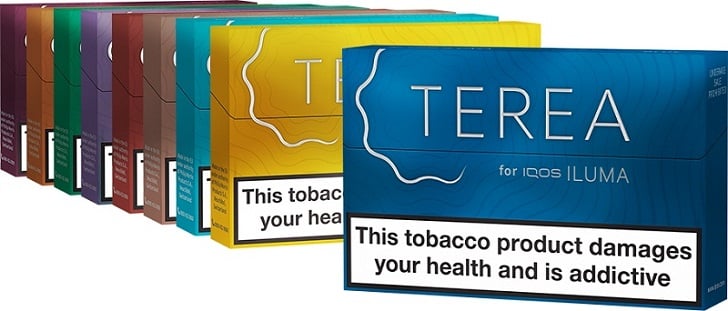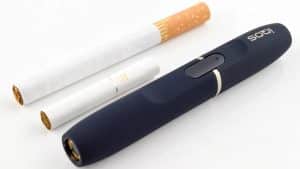
Back in April we looked at the latest research on the safety of iQOS heated tobacco products compared to traditional cigarettes, and it looked very encouraging for heat not burn devices. Studies carried out for PMI by independent labs found that the vapour from an iQOS had much lower levels of toxic chemicals than cigarette smoke – in most cases, 90% or 95% lower. That’s impressive, especially considering that the tests looked at a much larger range of chemicals than any research done by public health groups.
The down side to this research was that it only looked at iQOS. Yes, that particular product is much safer than smoking, but does it apply to HnB in general? Realistically it’s going to be a while before we know that for sure, but this week some more results were released, this time by British American Tobacco. We recently did the first full UK review of BAT’s new Glo, their entry into the heated tobacco market; now there’s some science to go with our impressions of this device.
Real science?
Although research done by the tobacco industry in the past has had a bad reputation, things have moved on a long way since the 1960s. Companies like BAT know that anything they publish is going to be scrutinised in minute detail by activist scientists looking for the slightest hint of foul play, so they don’t take any chances. These days they’re scrupulous about following good research procedures and releasing details of their methods, so the research can be studied and replicated. How well are they doing at that? Well, all the criticism of PMI’s research on iQOS has been about where the money comes from; nobody has said a word against the science. That probably tells us all we need to know.
BAT seem to have been just as careful with their own research, which makes the results worth looking at. For a start, they didn’t just bodge up some shonky equipment, like one university did recently when they used syringes to collect vapour from e-cigs. Instead, they studied how people actually use Glo then programmed a robot smoking device to replicate that. Then they tested Glo, collecting the vapour for comparison with a range of other products.
In total seven products were tested:
- Glo
- Three conventional cigarettes, including the standard 3R4F reference cigarette used in most smoking research.
- “Another THP (tobacco-heating product)”, almost certainly an iQOS.
- “A hybrid product”, BAT’s iFuse
- An e-cigarette.
This is a good selection of products, covering all the main categories on the market right now. BAT also tested for a wide range of chemicals. They used the Health Canada testing method to collect vapour, because it’s one of the most thorough methods in use, combined with their own list of chemicals. The FDA test for 28 different toxins in cigarette smoke; the International Agency for Research on Cancer only measure fifteen. BAT’s list has 44 substances in it – not quite as extensive as the 58 that PMI look for, but still much more impressive than what most health researchers are doing.
Checking the chemistry
What’s really impressive is the results of all this testing. Unsurprisingly, most of the vapour from Glo consisted of water vapour and glycerine, which is added to increase the vapour output. That’s interesting, because when we looked at the innards of a NeoStik the tobacco in it looked much less processed than the contents of a Heet. Obviously, even though what the Glo is heating looks like normal cigarette tobacco, BAT have added a considerable amount of glycerine to it somehow. That doesn’t cause any worries, though; glycerine is perfectly safe to inhale.
The nicotine content of the vapour was about 62% of that found in cigarette smoke. This makes sense; using the Glo, it felt similar to a light cigarette, while the 3R4F cigarette is a full-strength blend. In any case, this sort of nicotine dose is close enough to a cigarette that it’s an effective replacement.
Moving on to the less welcome substances, the tests showed sharp reductions in all of them. The lowest reductions were for mercury, at 57.1%, followed by ammonia at 64.3%. Neither of these chemicals are at high enough levels in cigarette smoke to be much of a worry anyway, but any reduction is welcome. For the other 41 chemicals tested, 39 had a reduction of at least 80% and 36 saw levels reduced by 90% or more. Almost half had at least a 99% reduction. The total reduction in toxins was around 90%.
Does this mean it’s safe?
It’s worth pointing out that a 90% reduction in toxins is impressive, but it doesn’t tell the whole story. For example, the single most harmful chemical in cigarette smoke is carbon monoxide, and smoke contains a lot of it. The level in Glo vapour was 98.6% lower. Benzene is another major problem for smokers; Glo reduces the level by 99.3%. Hydrogen cyanide – 98.8% lower. What this means is that while switching from cigarettes to the Glo heated tobacco device cuts total toxins by 90%, it almost certainly cuts the health risk by a lot more.
More good news from the study is that iQOS and the e-cigarette gave roughly similar results to Glo (although many of the toxins aren’t found in e-cig vapour at all).
Between this new research and what PMI have already released about iQOS, it seems obvious that heated tobacco is much safer than smoking, and probably about the same as vaping an e-cigarette. A reduction in risk of at least 95% seems likely to be about right. Does this mean that switching to Glo cuts your risk of premature death by 95%? No – it almost certainly cuts it by a lot more than that. Jumping from a ground-floor window is about 95% less risky than jumping from a fourth-floor one, but the risk that’s left doesn’t mean your chance of dying drops from 50% to “only” 2.5%. It means that, if you’re really unlucky, you might twist your ankle.
If you need a final vote of confidence in BAT’s new research it’s just been published in a peer-reviewed medical journal, Regulatory Toxicology and Pharmacology. Peer review means a panel of experts have examined and decided that the experiments were good science and the data has been properly interpreted. Of course some extremists will refuse to accept it simply because it was funded by BAT, but open-minded people like our readers can find it here.











